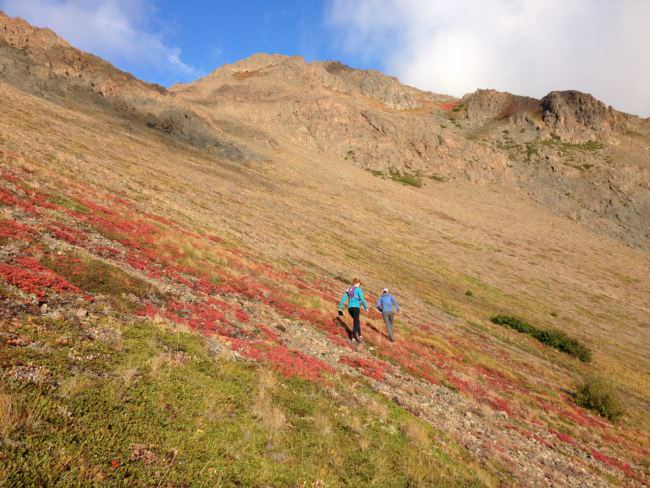
Fall colors are just past their peak in Southcentral Alaska. And that timing doesn’t have much to do with weather conditions. The formula for producing deep reds and bright yellows is pretty simple: it’s all about the sun angle.
Brian Brettschneider, with our Ask a Climatologist segment, said that’s because the green leaves get their color from chlorophyll, a molecule used in photosynthesis.
Interview transcript:
Brian: When the chlorophyll production shuts down in the fall, those other colors which are kind of always there, but overwhelmed by the green, then they stand out with the green no longer in effect.
Annie: And how does weather and climate play into when the leaves change?
Brian: Interestingly, I get asked this all the time. (People) say, ‘Oh, it’s been a warm summer, it’s been a cool fall, it’s been wet, it’s been dry, that’s really going to effect the colors of the leaves.’ Really, it makes very little difference. When the leaves change colors in the fall is primarily related to the sun angle.
So the leaves, they track the sun over the summer and the fall and they know when that solar energy is getting less and less. It’s that solar energy that drives photosynthesis and when it becomes too hard for the plant to do that it shuts down, the chlorophyll production drops off and you end up with these other colors.
There’s a little bit on the margins that the weather affects when it’s going to happen, but more importantly, the weather affects what the intensity and the duration of color is going to be. So if you have a few hard freezes in September, it’s going to shorten the length you’re going to have those colors, they’ll turn brown and fall off. If it’s sunny and cool but not freezing cold fall, those colors will be a little more intense, and they’ll last a little longer. So it’s not a driver of when it occurs, but it’s a driver of the extent and the duration and the intensity is going to be.
Annie: When the colors do change, does that alter the climate at all?
Brian: It does. In April and May, once green-up occurs, there’s a noticeable increase in atmospheric moisture, because as part of the process of photosynthesis, the leaves are transpiring moisture to the atmosphere. So you end up with a more humid, more moist atmosphere, which in the summer allows for thunderstorm production in the Interior. Once the chlorophyll production shuts down in the fall, that transpiration of moisture goes way down, so you end up with less moisture in the atmosphere that was contributed from the leaf production.
Annie Feidt is the broadcast managing editor at Alaska Public Media. Reach her at afeidt@alaskapublic.org. Read more about Annie here.





